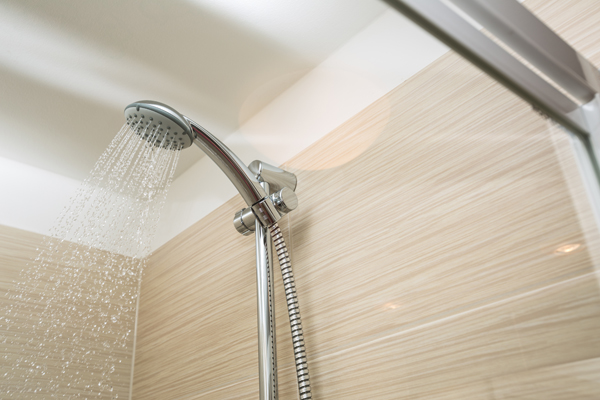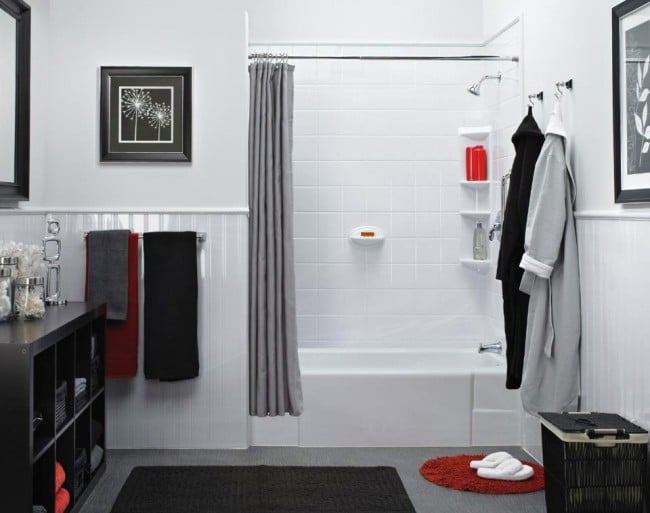{View Just about every person has got their own unique assumption in relation to Hiring a Plumbing Company. We recommend that you clean your acrylic bathing product made of Delta ProCrylic or Acrylic with Innovex Technology with non-abrasive soaps and cleaners, such as: When it’s time to clean, always use a terry cloth towel, soft cloth or sponge to avoid scratching the acrylic surface. Don’t use abrasive scrubbing pads, steel wool or sponges, cause permanent damage to the acrylic material. If you use a drain cleaner or clog remover, be sure to rinse thoroughly with water so no product is left standing near the drain. Some chemicals and cleaners may deteriorate acrylic surfaces, causing cracks and, potentially, property damage. To avoid this, don’t use cleaning products that state on their label that they are not suitable for use on Acrylic, ABS, Polystyrene or Plastic. Be sure to check the label of any product before you apply it to the surface; it’s easier to avoid damage than to try to remedy it. Chemicals we do not recommend using to clean acrylic showers/tubs: When you’re ready to apply sealant, a little planning goes a long way. Pick up some painter’s tape and use it to mask off the seam to help make cleaning up easier. When you’re applying the bead, use a constant, steady speed to avoid an uneven finish. Use a caulk tool or a plastic spoon to work the sealant into the joint. Wetting the tool with denatured alcohol will help create a smooth finish. Follow the directions on the back of the tube for cure time. Certain chemicals and cleaners may deteriorate acrylic surfaces, causing cracks and, potentially, property damage. After you’re finished applying it, clean up the product surface and remove any excess sealant with denatured alcohol. Don’t use solvents (turpentine, lacquer thinner, mineral spirits, paint thinner, MEK, xylene, acetone, naphtha, etc.) that can wreak havoc on an acrylic surface. With a little care and consideration, you can prevent damage to your acrylic shower or tub. Keep a supply of soft cloths handy and remove any damaging products or abrasive scrubbing items from the bathroom to ensure they aren’t around when it’s time to clean. https://www.deltafaucet.com/design-innovation/inspiredliving/how-to-clean-acrylic-shower Do you appreciate reading up on 6 Things to Know About When Hiring a Plumbing Services? Try to leave a comment further down. We will be glad to know your feelings about this posting. We hope that you come back again later on. If you enjoyed reading our blog entry plz don't forget to pass it around. Kudos for your time. Kindly visit our site back soon.
Polymer bathrooms, shower trays, and other acrylic restroom ware have ended up being a lot more usual in washrooms in current times. Not as stylish and durable as enamel and porcelain bathrooms and components, they are extra inexpensive and also offer quite much the same basic objective. Some typical examples of damages to acrylic shower room fixtures consist of staining, fractures, openings, and so on.Scratched shower or bathroom surface
Polymer washroom components are not abrasion-resistant like enamel varieties. Being a very soft product, acrylic scratches can even be concealed without covering or filling. For these, you ought to seek expert aid for your bathroom fixings.Chain reaction
Sometimes, individuals try to repaint the whole surface area of their acrylic bath by themselves either since they do not such as the shade to conceal blemishes. You must never ever use paint remover on acrylic baths. Paint cleaners do not respond with the surface of metal bathrooms, they ruin acrylic bathrooms irreversibly.Bathroom Staining
With extended usage of acrylic baths comes staining or staining. While some discolorations can be gotten rid of easily, making use of special chemicals, others call for that the bath be resprayed. Aromatherapy oils loosen up the dust in some cases consequently recovering the bath to its former magnificence.Cracked Acrylic Baths
The lifespan of acrylic and also fiberglass baths is up to 15-20 years for shower frying pans and also baths, generally. Cracks in an acrylic shower tray are most likely amongst the easiest troubles to repair for a repair expert. This is the exact same for PVC, material, and other such products.
Polymer bathrooms, shower trays, and other acrylic shower room ware have actually come to be much more typical in washrooms in current times. You need to never use paint remover on acrylic baths. Paint removers do not react with the surface of steel bathrooms, they damage acrylic bathrooms irreversibly. With long term usage of acrylic bathrooms comes discoloration or staining. The lifespan of acrylic and fiberglass bathrooms is up to 15-20 years for shower frying pans as well as baths, usually.How to clean Acrylic shower
USE THESE NON-ABRASIVE CLEANERS
DO NOT USE THESE CLEANERS
Sealant Application Tips

Course Detail
5 Acrylic Bathroom Problems and Solutions
Call Today